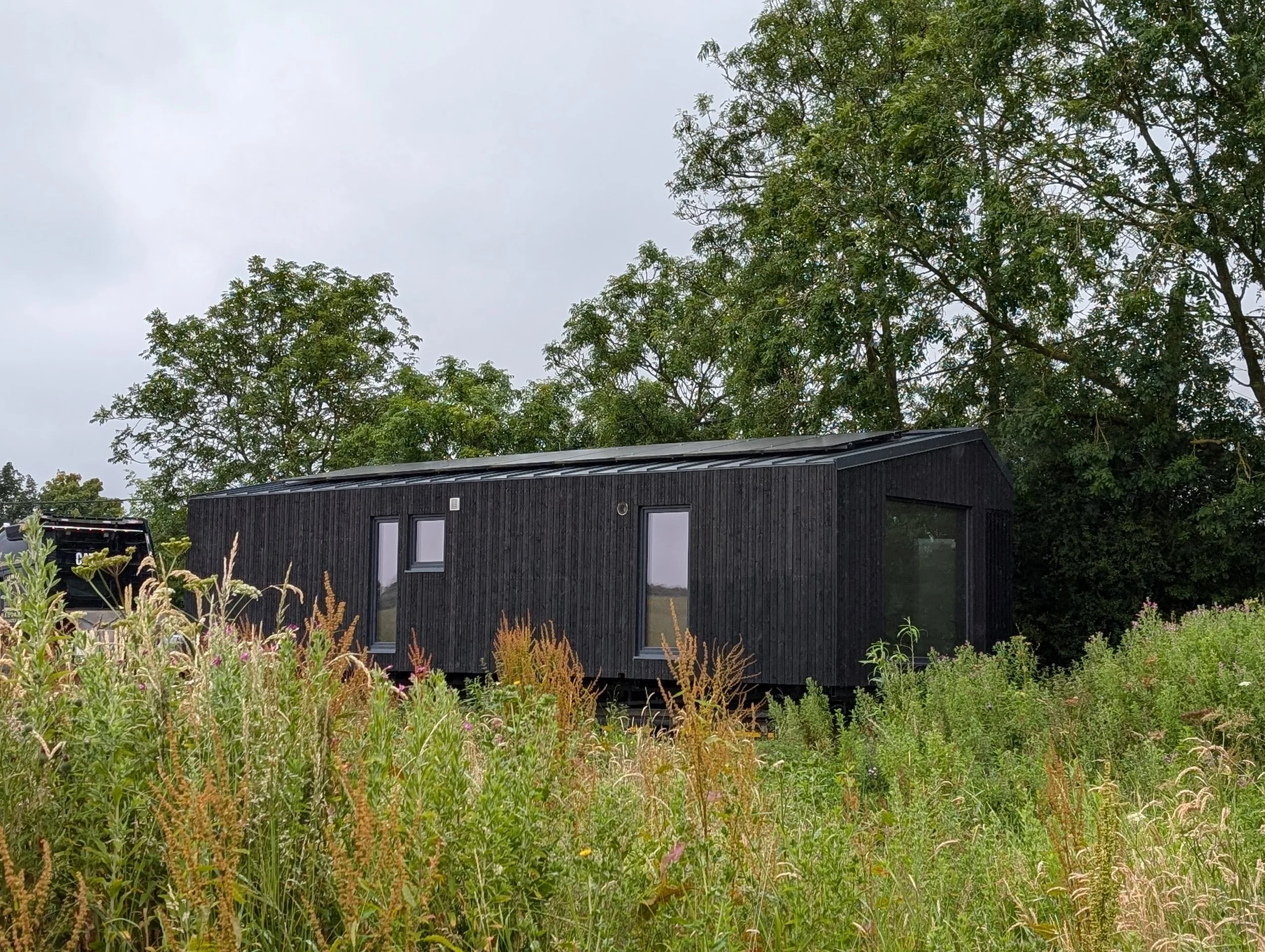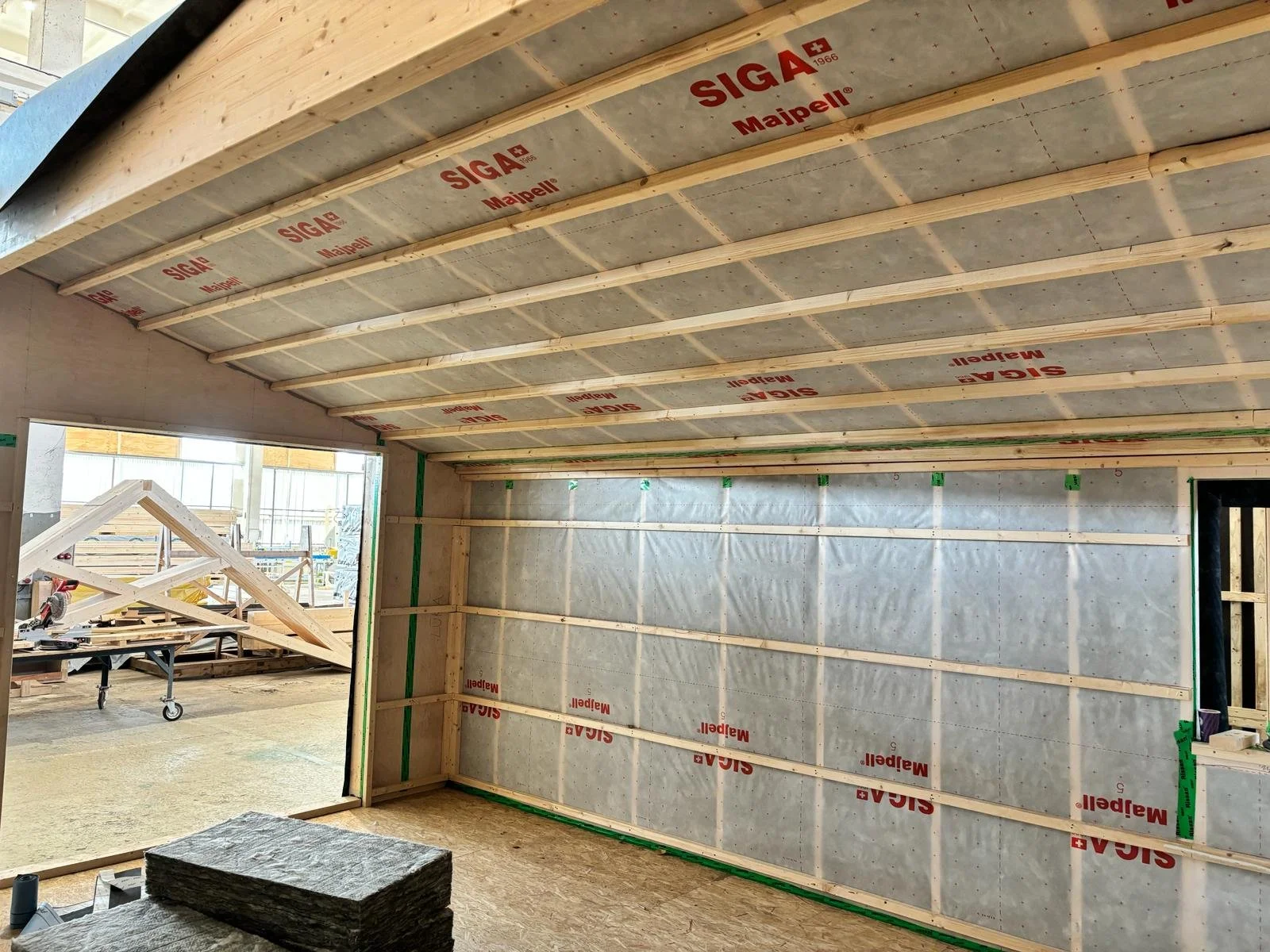Exploring Log Cabins: Features, Popularity, and Comparisons with Timber Frame Cabins
Log cabins have captured the imagination of many, evoking images of serene, rustic living amid nature - think Canada or Scandinavia, even Switzerland for these beautiful log cabins. While your business or yourself may not know all of the benefits or weaknesses of a log cabin, exploring the key features and popularity of these structures can provide valuable insights for your audience or yourself. Additionally, comparing log cabins with your timber frame built cabins by companies such as ourselves—designed with a focus on energy efficiency and modern aesthetics—offers a unique perspective.
Luxury Timber Frame Cabin
Key Features of Log Cabins
1. Natural Aesthetic
Log cabins are celebrated for their warm, natural appearance. The visible logs create a cosy, inviting atmosphere that resonates with rustic charm. The unique grain patterns and colours of the wood contribute to each cabin's individuality, enhancing its appeal.
2. Durability and Longevity
Constructed from solid logs, these cabins are inherently strong and durable. When properly maintained, log cabins can last for decades, often outliving conventional homes. The natural properties of wood, such as resistance to decay, contribute to their longevity.
3. Thermal Insulation
Logs provide excellent thermal mass, helping to regulate indoor temperatures. This quality can lead to reduced energy costs, as log cabins can remain warm in winter and cool in summer. However, it is essential to note that the effectiveness of insulation can be influenced by the construction methods and materials used.
4. Sustainability
With a growing emphasis on eco-friendly living, log cabins often appeal to environmentally conscious buyers. Many log cabins can be constructed using sustainably sourced timber, making them a more attractive option for those seeking to minimise their carbon footprint.
5. Versatility in Design
Log cabins can be designed for various purposes, from holiday homes to full-time residences. Their versatility extends to various architectural styles, accommodating everything from traditional to modern aesthetics.
Why Are Log Cabins So Popular With UK Holiday Goers?
1. Connection to Nature
Log cabins often invoke a sense of peace and tranquility, providing an ideal retreat from the hustle and bustle of urban life. Many people are drawn to the idea of living closer to nature, and log cabins often blend seamlessly into forested or mountainous landscapes.
3. Simplicity
Compared to traditional Airbnb’s, cottages and luxury lodges, a log cabin can offer a rustic and simple weekend break, particularly in rural areas. This makes them an attractive option to those who are looking to wander into the woodland, read a book with a coffee and potentially lay back with a s’more in front of the fire until the late evening.
4. Minimalist Lifestyle
The log cabin lifestyle often promotes a stripped back way of living. One that many may be curious of but have yet to try. A log cabin weekend break can offer a couple or family a taste of the minimalist lifestyle were time feels slowed down and quality is spent over watching TV and scrolling on phones.
Comparing Log Cabins and Timber Frame Cabins
While log cabins have their unique charm, so can timber frame cabins. A log cabin whilst has the visual appearance of the whole logs, a timber framed home offers a distinct advantage in energy efficiency due to the thicker insulation but can also include all natural materials in a modern way offering a luxury escape with all your guests home comforts which incorporates the stripped back minimalist weekend stay they are seeking.
You can see our luxury timber frame cabin coming to life in the factory. The airtight membranes and tapes show our dedication to making sure minimal heat loss occurs, saving you money in heating bills.
1. Construction Method
Log cabins are built using whole logs, which are stacked horizontally to create walls. In contrast, timber frame cabins use a framework of timber and CLT which is then snuggly packed with wood blown fibre insulation allowing you the choice of exterior and interior wood finish from slatted panels to whole sheets of smooth Baltic Birch Plywood. This allows you, as the cabin owner, greater flexibility in design and layout ensuring that you stand out from the traditional design whilst offering everything yourself or your guests are seeking - an added bonus is their energy savings!
2. Insulation Properties
Timber frame cabins can achieve superior thermal performance when constructed with advanced, natural insulation materials like wood blown fibre. This insulation method not only enhances energy efficiency but also contributes to improved indoor air quality by allowing for better moisture management with heat recovery ventilation systems, which is simply a smart piece of kit that keeps an ambient temperature inside the home whilst cleaning the air removing pollutants, dusts as well as moisture to reduce the chances of mold build up.
4. Energy Efficiency
Timber frame cabins designed to a Passive House standard can significantly reduce energy consumption. With log cabins being a highly sustainable product, guests seeking this type of holiday will also have a key focus on the environmental side of the site which includes how much Co2 the site is producing each year. Whilst it is not a mandatory report, ESG reporting is now becoming the norm to highlight a companies usage over the year. With a Passive designed cabin, this means your cabins use a fraction of the energy/heating a log cabin would use/create ensuring that you Co2 creation is exceptionally low - plus low energy bills too! If you’re looking for a log cabin as an annex or personal outbuilding, then you can sit back and relax in the knowledge that a timber frame cabin can provide you with very low energy bills, low maintenance, and a home that’s built to last.
5. Sustainability Practices
Both log cabins and timber frame cabins can be constructed sustainably, but timber frame construction often allows for the use of additional certified sustainable materials. This focus on sustainability can appeal to environmentally conscious buyers and align with modern building practices or regulations.
Interesting Aspects to Consider of Timber Frame Cabins
Maintenance Requirements
Log cabins require regular maintenance to prevent issues such as rot, insect infestations, and moisture damage as they’re open more to the elements. In contrast, timber frame cabins that are clad with Sugi-ban charred cladding for example, does not require any maintenance along with modern technologies that remove moisture reducing mold and chances of rot over the years, making them more appealing for busy business owners or homeowners that care about the lifespan of their cabin.
Market Trends
Log cabins hold a special place in the hearts of many, offering a blend of natural beauty, durability, and a connection to nature. However, timber frame cabins designed with modern principles and sustainable practices present a compelling alternative. By exploring the unique features and advantages of both, you can provide valuable insights to your readers, helping them make informed decisions about their ideal cabin lifestyle. Whether they are captivated by the rustic charm of log cabins or the sleek efficiency of timber frame homes, there is a perfect cabin for everyone.


